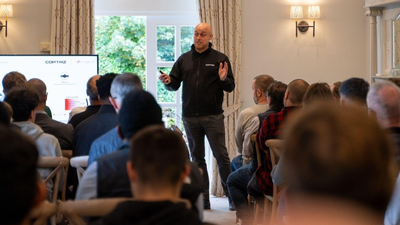What's In The CAA's 2025 Future Of Flight BVLOS Roadmap?
- by Stefan Gandhi
The vision of a future with skies buzzing with delivery drones is a popular one, often portrayed as a sudden technological leap that will transform our cities overnight. We imagine packages and medical supplies flying autonomously over our heads, a science-fiction dream made real.
However, the reality of implementing such a system, particularly in one of the world's most complex and busy airspaces, is far more intricate. Safely integrating uncrewed aircraft systems (UAS) requires a plan that is less about revolutionary disruption and more about careful, deliberate evolution. The UK's Civil Aviation Authority (CAA) has laid out this exact strategy in its Future of Flight BVLOS Roadmap: a plan with the concrete objective to have routine Beyond Visual Line of Sight (BVLOS) operations in the UK by 2027.
This article distils the four most surprising and impactful takeaways from that official plan, revealing a pragmatic and fascinating approach to building the future of aviation.
1. The Goal Isn't a 'Big Bang', It's a Slow, Deliberate Build
Unlike a typical tech-industry disruption that aims for rapid, sweeping change, the CAA's strategy is explicitly against a ‘big bang’ approach. The core principle is one of iterative development, where policies and real-world operations mature together in a continuous ‘learn and evolve loop’.
This pragmatic approach prioritises safety and steady progress over risky, rapid change. The idea is to enable limited operations in controlled environments, gather crucial safety data from them, and use those learnings to gradually expand what is possible. Temporary measures are not seen as a final solution but as a crucial part of the process. This is a core tenet of the CAA's strategy, formally stated as one of its 'Delivery Approach Principles':
Segregation is a stepping stone towards integration
2. Progress Is Happening on Three Separate 'Pathways' at Once
Instead of trying to create a single, all-encompassing set of rules for every type of drone flight, the CAA has broken down the immense challenge into distinct ‘Operational Pathways’. These pathways group together operations with similar characteristics, allowing for tailored regulations and targeted progress.
The roadmap focuses on three core pathways for Beyond Visual Line of Sight (BVLOS) flights:
- Atypical Air Environment (AAE): For operations that happen in close proximity to ground infrastructure, like inspecting power lines, railways or wind turbines.
- Integrated Low Level BVLOS Over Urban Area: For tasks like last-mile medical or consumer goods deliveries that take place over populated areas.
-
Fully Integrated BVLOS: The most ambitious pathway, designed for operations like middle-mile logistics between warehouses, which will be fully integrated with all other air traffic.
This pathway approach is a clever solution to a complex problem. The CAA has identified five total BVLOS pathways, but by focusing on these three, it allows simpler, lower-risk operations (like infrastructure inspection) to move forward and generate value today, while the more difficult challenges of full integration are still being solved.
3. Today's Flights Are a Live Testbed for Tomorrow's Policies
Each pathway evolves through a series of ‘Operational Scenarios’: specific, real-world operations that act as live testbeds. This creates a powerful feedback loop. For instance, a policy might first be developed to support a single operator in a specific area. Data from those live flights is then used to advance the policy to safely support multiple operators in the same airspace, thereby unlocking greater commercial opportunity.
A tangible example of this process is already underway. The ‘London Health Bridge; operation, which flies medical supplies between two hospitals in London, serves as a current Operational Scenario. Crucially, this flight relies on the access conditions of a Temporary Reserved Area (TRA) and bespoke procedures, reinforcing its role as a ‘stepping stone’. It is being used to test the technology and procedures that will one day enable routine urban drone deliveries, grounding abstract policy work in a real-world application with immediate societal benefit.
4. The Endgame Is One Sky for Everyone
While initial steps rely on temporary or segregated airspace, the long-term vision is not to create permanent, separate ‘drone lanes’. The ultimate goal is the full, safe and routine integration of drones into all UK airspace, operating alongside traditional crewed aircraft without needing special exceptions.
The CAA states this ambitious goal unequivocally:
To scale successfully, UAS will need to be able to integrate safely and routinely into UK airspace, without need for ‘special provisions’ or ‘segregated airspace’.
Achieving this ‘one sky’ vision is a monumental task. It requires solving complex technological challenges, such as certifying ‘Detect and Avoid’ systems, and developing sophisticated air traffic management systems where Uncrewed Traffic Management (UTM) can interact seamlessly with traditional Air Traffic Management (ATM) via a System Wide Information Management (SWIM) framework. This is precisely why the iterative, pathway-based approach is so critical: it builds the foundation of technology, trust and policy needed to reach this final, fully integrated state.
Conclusion: A Pragmatic Path to a New Airspace
The UK's plan for a drone-filled future is not one of sudden disruption, but of careful, pragmatic and iterative progress built on a foundation of safety. It is a roadmap that acknowledges complexity and favours measured steps over risky leaps.
With this meticulously planned framework in place, the question is no longer if our skies will be transformed, but which of these pathways will deliver a new reality to our doorsteps first.




